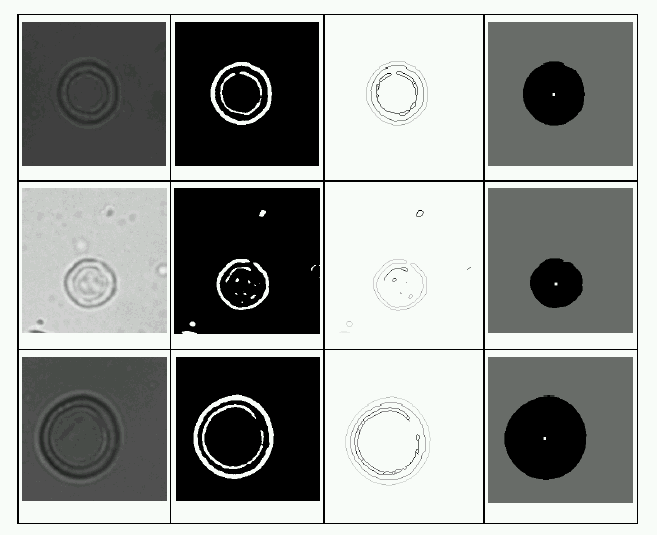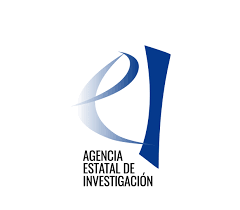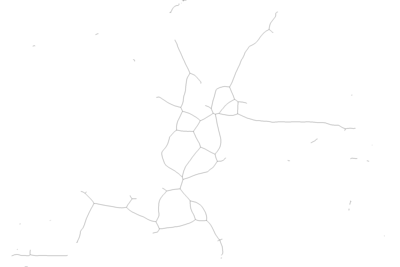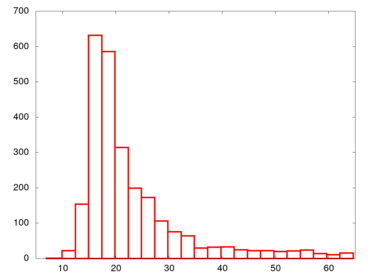APPLICATIONS IN AGRO-ALIMENTARY INDUSTRIES AND RESEARCH
TwinBro
El Programa Estatal para Impulsar la Investigación Científico-Técnica y su Transferencia y el Subprograma Estatal de Transferencia de Conocimiento, dentro del Plan Estatal de Investigación Científica, Técnica y de Innovación para el período 2021-2023, en el marco del Plan de Recuperación, Transformación y Resiliencia, ha publicado la concesión de ayudas públicas a proyectos de colaboración público-privada, destinadas a financiar proyectos de desarrollo experimental en colaboración entre empresas y organismos de investigación.
Estas ayudas se enmarcan en la inversión I3, denominada «Nuevos proyectos I+D+I Publico Privados, Interdisciplinares, Pruebas de concepto y concesión de ayudas consecuencia de convocatorias competitivas internacionales, I+D de vanguardia orientada a retos de la sociedad, Compra pública pre-comercial», del componente 17 «Reforma institucional y fortalecimiento de las capacidades del Sistema Nacional de Ciencia, Tecnología e Innovación» del Plan de Recuperación, Transformación y Resiliencia de España y contribuirán al cumplimiento de los objetivos asociados a la misma, de acuerdo con la normativa reguladora del Mecanismo de Recuperación y Resiliencia y del Plan de Recuperación a nivel europeo y nacional.
TWINBRO es un proyecto que tiene como objetivo global el diseño, desarrollo e integración de una arquitectura Gemelo Digital, aplicable a la cría de pollos de engorde, compuesta por una granja física en el espacio real, una representación digital de esa granja en el espacio virtual y la sincronización entre el espacio virtual y el real para transferir datos e información mediante tecnologías IoT. El Gemelo Digital estará basado en una arquitectura de información habilitadora compuesta de tecnologías de inteligencia artificial, aprendizaje automático, captura y transformación eficiente de datos masivos, simulación y sistemas de apoyo a la toma de decisiones.
El proyecto está liderado por TRIPLEALPHA INNOVATION SL., empresa tecnológica especializada en analítica de datos aplicada al ámbito de Producción y Operaciones, y cuenta con la colaboración de la empresa IMASDE AGROALIMENTARIA SL, líder en I+D para la industria agroalimentaria, y con el Grupo de Investigación LIA2: Laboratorio de Inteligencia Artificial Aplicada de la Universidad de Vigo.
FAETÓN
The principal objective of this research is to investigate whether there is a correlation between the features of the images taken by an electron microscope, the production conditions of the bio-polymers, and their macroscopic properties.
 |
Example of an image taken with a electron microscope that shows a flake of bio-polymers or nanotubes. We processs such an image through different steps in order to equalize its background, to reduce its noice, to binarize the gray scales into black&white, and eventually to compute its skeleton. |
|
|
Example of a skeleton image of a bio-polymer. Such an image is further processed in order to find its connected components and to calculate certain features such as length or width distributions. |
|
|
Example of the width distribution of the nanotubes of the main component in the image as shown above. |
As a side effect within this research, we have developed a general improvement for iterative and parallelizable thinning algorithms. We call the new method guided thinning and the skeletons obtained with the modification are much better centralized within the shapes. The results that we achieve when the method is incorporated into standard iterative thinning algorithms are shown in this image gallery. The corresponding research article is currently under peer review.
El grupo LIA2 participó en el Cluster de Investigación e Transferencia Agroalimentario do Campus Auga (CITACA).
Hyperspectral image processing for quality control in the potato industry
The overall objective of this project was the design and analysis of image processing and hyperspectral imaging techniques to automate certain tasks related to quality control in the potato industry which are developed manually until now. The study covered the classical stages of computer vision, but now applied to hyperspectral images: design and implementation of an image acquisition system, preprocessing and segmentation through various image processing techniques, feature extraction, and classification.
Some of the tasks that have been developed are:
- Classification of tubers depending on their external defects (greening, rotten, etc.).
- Detecting hollow heart in potatoes using hyperspectral imaging.
- Estimating area affected by common scab in potatoes using hyperspectral imaging.
We provide to the research community the database (.rar-file 1.52 GiB, md5-checksum, and Readme-file) of a set of hyperspectral images which we used to detect the hollow heart and other deseases in potatoes using hyperspectral information in the infrared spectrum (900 nm to 1700 nm).
Classification and counting of pollen grains
Palynological data are used in a wide range of applications such as paleoclimatic reconstruction, allergenic process, and food technology. Fossil pollen spectra are used for paleoenvironmental reconstruction in the Quaternary and in the geological past. The count of pollen in the air allows to suggest safety treatments to patients who are allergic to pollen. Pollinic analysis of honeybees is used to determine their geographical origins. The principal tasks in almost all of these applications are classification and counting, which are laborious and time consuming due to the fact that they are done manually by highly skilled experts. A high level of training is needed to obtain accurate identification results. The morphology of the grains is fundamental to identify the type of pollen. The key parameters are shape, polarity, symmetry, aperture, size, exine stratification, and sculpturing type of the grain.
We are interested in discriminating species of the same family Urticaceae, namely, Parietaria Judaica, Urtica Urens, and Urtica Membranacea which is not achieved in routine pollinic analysis. Our attempt is to classify and count the grains of pollen in a slice that represents the visual information reported by an optical microscope. The method consists of two steps: detection of pollen grains in the slice based on the Hough transform, and their classification. The detection step includes two phases: finding the location of the grains and extracting their silhouette. The classification step also includes the phase of computing the feature vector that represents each pollen grain which includes area, diameter, compactness, roundness, holes, thickness, elongatedness, eccentricity, several statistical measures and fourier descriptors. For classification itself we use minimum distance classifiers, multilayer perceptron, and support vector machine.

The final result obtained was 86% of correct pollen classification using the most convenient combinations of features and classification algorithms. The largest values of correctness has been reached for the Urtica Membranacea with 98%, but the value fell down to 82% for the Urtica Urens and to 76% for the Parietaria Judaica.
Automatic classification of honey bee pollen
Automatic classification of wine leaves
Financed Projects
-
Title: TwinBro: Desarrollo de un sistema de control y gestión de granjas avícolas basado en una arquitectura de información habilitadora para la implantación de un sistema gemelo digital
Start Date: 01/03/2022
End Date: 31/12/2024
Budget: 208151 €
Leaders: Francisco Javier Rodríguez Martínez
Funding Bodies: Ministerio de Ciencia e Innovación [CPP2021-008826], European Union (FEDER Funds) -
Title: DAEIRA: Dynamic Applications for Expert Information Recognition and Analysis
Start Date: 01/10/2020
End Date: 30/06/2021
Budget: 20000 €
Leaders: Arno Formella
Funding Bodies: Universidade de Vigo -
Title: CITACA: Cluster de Investigación e Transferencia Agroalimentario do Campus da Auga
Start Date: 01/01/2018
End Date: 31/12/2020
Budget: 424084 €
Leaders: Ana María Torrado Agrasar
Funding Bodies: Xunta de Galicia [ED431E2018/07] -
Title: Consolidación e estruturación de unidades de investigación competitivas
Start Date: 01/01/2017
End Date: 30/11/2019
Budget: 90000 €
Leaders: Arno Formella
Funding Bodies: Xunta de Galicia [ED431B 2017/86] -
Title: DAEIRA: Dynamic Applications for Expert Image Recognition and Analysis
Start Date: 01/01/2016
End Date: 31/12/2016
Budget: 15000 €
Leaders: Arno Formella
Funding Bodies: Universidade de Vigo [15VI016] -
Title: FAETÓN: Ferramenta para o análisis das estructuras de nanotubos mediante visión por computador
Start Date: 15/07/2015
End Date: 13/11/2015
Budget: 4000 €
Leaders: Pilar Carrión Pardo
Funding Bodies: Universidade de Vigo [INOU15], Excma. Deputación Provincial de Ourense -
Title: Clasificación automática y recuento de pólenes a partir de imágenes digitales de microscopía óptica
Start Date: 30/06/2003
End Date: 30/06/2004
Budget: 7500 €
Leaders: Eva Cernadas García
Funding Bodies: Universidade de Vigo [03VI1C02]
Publications
-
Title: Guided Thinning
Year: 2019
Journal: Pattern Recognition Letters
Editorial: Elsevier [10.1016/j.patrec.2019.08.030]
Issn: 0167-8655
Impact factor: 2.810 (Q2)
Base: JCR (2019)
Type: Journal Articles
Authors: Santiago Iglesias Cofán, Arno Formella
-
Title: Faetón: ferramenta para a análisis das estruturas de nanotubos mediante técnicas de visión por computador
Year: 2016
Editorial: Universidade De Vigo
Isbn: 978-84-8158-717-3
Pages: 53 - 67
Type: Book Chapters
Authors: Arno Formella, Alma Gómez Rodríguez, Encarnación González Rufino, Santiago Iglesias Cofán, Pilar Carrión Pardo
-
Title: Common scab detection on potatoes using an infrared hyperspectral imaging system
Year: 2011
Editorial: Springer [LNCS]
Isbn: 978-3-642-24087-4
Issn: 0302-9743
Pages: 303 - 312
City: Ravenna
Country: Italy
Conference Name: 16th International Conference on Image Analysis and Processing (ICIAP'2011)
Impact factor: CORE 2008 B
Type: Conference Contributions
Authors: Pilar Carrión Pardo, Arno Formella, Ángel Dacal Nieto, Manuel Fernández Delgado, Esteban Vázquez Fernández
-
Title: Rapid infrared multi-spectral systems design using a hyperspectral benchmarking framework
Year: 2011
Isbn: 978-1-61284-348-3
Pages: 1 - 4
Conference Name: IEEE International Conference on Multimedia and Expo (ICME)
Organizer: IEEE Signal Processing
Type: Conference Contributions
Authors: Pilar Carrión Pardo, Arno Formella, Ángel Dacal Nieto, Manuel Fernández Delgado, Esteban Vázquez Fernández
-
Title: Procesamiento de imagen y visión hiperespectral para el control de calidad en la industria de la patata
Year: 2011
Editorial: Universidade De Vigo
Organizer: Pilar Carrión Pardo, Arno Formella
Type: Phd Thesis
Authors: Ángel Dacal Nieto
-
Title: Non-Destructive Detection of Hollow Heart in Potatoes Using Hyperspectral Imaging
Year: 2011
Editorial: Springer [LNCS]
Isbn: 978-3-642-23677-8
Issn: 0302-9743
Volumen: 6855
Pages: 180 - 187
City: Sevilla
Country: Spain
Conference Name: 14th International Conference on Computer Analysis of Images and Patterns (CAIP'2011)
Impact factor: CORE 2008 B
Type: Conference Contributions
Authors: Pilar Carrión Pardo, Arno Formella, Ángel Dacal Nieto, Manuel Fernández Delgado, Esteban Vázquez Fernández, Constantino Antonio García Martínez
-
Title: A genetic algorithm approach for feature selection in potatoes classification by computer vision
Year: 2009
Editorial: IEEE Society
Isbn: 978-1-4244-4649-0
Pages: 1955 - 1960
City: Porto
Country: Portugal
Conference Name: 35th Annual Conference of the IEEE Industrial Electronics Society (IECON'2009)
Type: Conference Contributions
Authors: Arno Formella, Ángel Dacal Nieto, Higinio González Jorge, Fernando Martín Rodríguez, Esteban Vázquez Fernández, Mª Soledad Torres Guijarro
-
Title: Automatic detection and classification of grains of pollen based on shape and texture
Year: 2006
Journal: IEEE Transactions on System, Man, and Cybernetics, Part C
Editorial: IEEE Society
Issn: 1094-6977
Volumen: 36
Pages: 531 - 542
Impact factor: 1.375 (Q3)
Base: JCR 2013
Type: Journal Articles
Authors: Arno Formella, Eva Cernadas García, Manuel Fernández Delgado, Pilar Sá Otero, María Rodríguez Damián
-
Title: Clasificación automática y recuento de granos de polen a partir de imágenes digitales de microscopía óptica
Year: 2005
Editorial: Universidade De Vigo
Organizer: Eva Cernadas Garcia, Arno Formella. Mª Pilar Sá Otero
Type: Phd Thesis
Authors: María Rodríguez Damián
-
Title: Algoritmos de clasificación de texturas para la determinación del origen floral del polen apícola
Year: 2003
Editorial: Universidade De Vigo
Organizer: Eva Cernadas García, Mº Pilar Sá Otero
Type: Phd Thesis
Authors: Pilar Carrión Pardo
People Involved
- Barreiro Alonso, Enrique
- Carrión Pardo, Pilar
- Cernadas García, Eva
- Cuesta Morales, Pedro
- Dacal Nieto, Ángel
- Fernández Delgado, Manuel
- Formella, Arno
- González Jorge, Higinio
- González Moreno, Juan Carlos
- González Rufino, Encarnación
- Gómez Rodríguez, Alma
- Iglesias Cofán, Santiago
- Lorenzo Iglesias, Eva
- Martín Rodríguez, Fernando
- Meilán Maldonado, José Miguel
- Rodríguez Damián, María
- Rodríguez Lorenzo, Yago Antonio
- Rodríguez Martínez, Francisco Javier
- Rodríguez Pérez, Carla María
- Rodríguez Pérez, Carla María
- Sá Otero, Pilar
- Sánchez Blanco, Melania
- Torres Guijarro, Mª Soledad
- Vázquez Fernández, Esteban
Student Work
-
Title: Mejora de algoritmos de adelgazamiento para imágenes binarias
Year: 2017
Type: Master's Thesis
Authors: Santiago Iglesias Cofán
-
Title: Aplicación de filtros morfolóxicos na detección de nanotubos en imaxes
Year: 2016
Type: Bachelor's Thesis
Authors: Melania Sánchez Blanco
-
Title: Software para o recoñecemento de características de nanotubos
Year: 2015
Type: Bachelor's Thesis
Authors: Santiago Iglesias Cofán
-
Title: DotLine, una herramienta para el estudio de modelos y la clasificación de ejemplares
Year: 2007
Volumen: ENI-202
Type: Master's Thesis
Authors: Carla María Rodríguez Pérez, Carla María Rodríguez Pérez
-
Title: Sistema de clasificación de modelos de hojas de vid a partir de datos filométricos
Year: 2003
Volumen: INX-511
Type: Bachelor's Thesis
Authors: Carla María Rodríguez Pérez, Carla María Rodríguez Pérez
Press Articles
- (05/12/2016)De la bioinformática a la simulación aeroespacial
- (16/12/2015)O grupo LIA2 deseña un software para a caracterización de nanotubos
- (26/07/2011)Un invento estudia la calidad de la cosecha de patatas por fincas
- (12/07/2011)Visión hiperespectral para garantir a calidade de cada pataca
Resources
- Hyperspectral database of potatoes [Databases]
- Readme of hyperspectral potatoes database [Databases]







